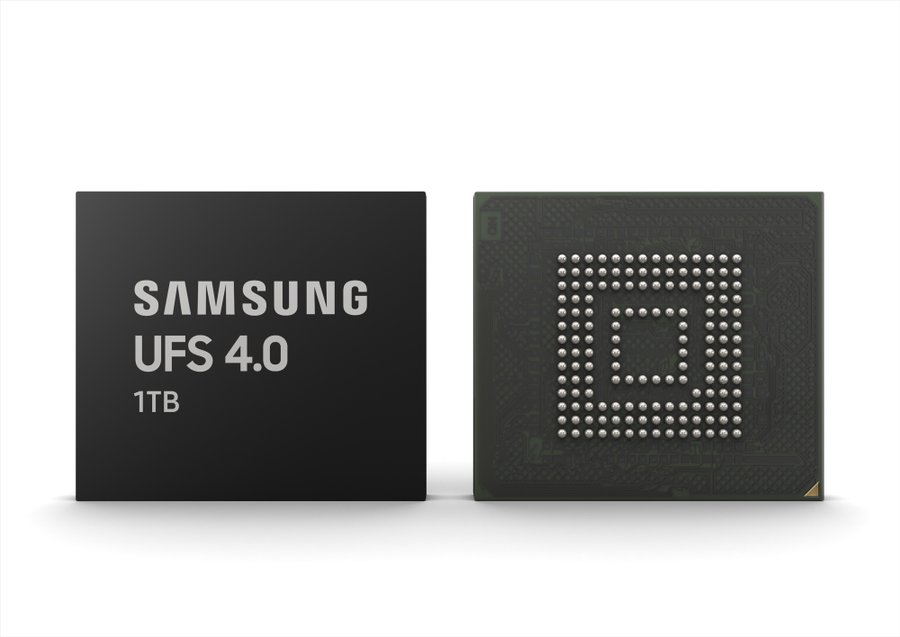UFS 4.0: A much needed storage upgrade
UFS 4.0 promises to bring power efficiency, better storage write and read speeds when compared to UFS 3.1.
The UFS 4.0 is an upgrade over the 2020 UFS 3.1. The UFS 4.0 like the one before it was made by Samsung. The UFS 4.0 is a much-needed upgrade over the UFS 3.1, promising to improve and increase the speed and performance of your smartphone. Yes, the processor of a device is the major driving force behind that blazing-fast device, but, the presence of high-end storage chip can further keep the performance of the processor at its very peak.
Before we dive deeper into the dynamics of UFS 4.0, let's find out,
What is UFS?
UFS is an acronym for Universal Flash Storage. UFS storage chip first came into adoption in 2016, when the eMMc storage option was relegated to low-end devices.
UFS storage chips provide a better speed of reading and writing of files, giving a device processor easier and faster access to files whenever the need arises. UFS adopts a multi-operational reading and write pattern [duplex operation]. What this simply means is, that a processor can ask a UFS to read files for it while simultaneously asking the UFS to write files for it without any time-wasting.
For a UFS to perform properly, there is a chip between the UFS and the device processor called Controller. A controller manages how a processor writes files on a UFS storage chip.
A controller has two main jobs. First of all, it has to be able to speak the UFS protocol, so that the UFS can talk to the processor and the processor can access the internal storage[UFS]. It also acts as a flash management chip [a flash controller]. So it's dealing with things like error correction, wear leveling and bad blocks.
Basically, when the controller comes on over the UFS, the controller knows where the best place to put files is for optimum performance. This is what a controller chip does, obviously with a new upgrade like UFS 4.0, there needs to be a new controller.
Gray explained
Furthermore, there have been UFS 1.0, 1.1, 2.0, 2.1, 2.2, 3.0, and 3.1, before this newly launched UFS 4.0.
The dynamics of UFS 4.0.
UFS 4.0 was unveiled by Samsung in May 2022 as an upgrade to the UFS 3.1 which was launched in 2020. UFS 4.0 promises to bring power efficiency, better storage writes, and read speeds when compared to UFS 3.1. Also, UFS 4.0 is smaller in packaging compared to UFS 3.1.
By Samsung's revelation, two devices running the same hardware but different UFS storage chips of UFS 3.1 and UFS 4.0 will see a significant processing speed and improvement in battery optimization thanks to the improved UFS 4.0 storage chip.
Highlights of UFS 4.0
- Smaller size
- Samsung’s 7th Generation V-NAND memory and proprietary controller.
- 4200mbps sequential read speed.
- 2800mbps sequential write speed.
- UFS 4.0 will deliver a sequential read speed of 6.0mbps per mA, which is a 46% improvement over UFS 3.1.
- UFS 4.0 supports up to 23.2Gbps per lane, which is twice what you get from UFS 3.1.
- 1TB of storage on chip support.
Conclusion
Looking back 12 years ago when the first UFS 1.0 was launched in 2010, one can not help but see how advanced technology has become, making lives easier and time-efficient. However, we do not expect to see the UFS 4.0 in any flagship device anytime soon, as most manufacturers have already launched their flagship devices for the year 2022.
We expect to see rumors of a possible launch of UFS 4.0 devices in the 3rd quarter of 2022 and a device launch in Q4 of 2022 or Q1 of 2023. Hopefully, the emergence of UFS 4.0 will hopefully make it possible for more midrange devices to come equipped with the UFS 3.1.
Talking about tech is always fun for us at All Round Review, it was zesushv all along. Until the next one, do have a beautiful day.
Sources: Samsung, Gary Explained.
